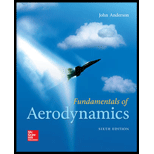
Consider a Lear jet flying at a velocity of 250 m/s at an altitude of 10 km. where the density and temperature are
Want to see the full answer?
Check out a sample textbook solution
Chapter 1 Solutions
Fundamentals of Aerodynamics
- 1 atm = 2116 lb/ft2 = 1.01 × 105 N/m2. Consider the isentropic flow over an airfoil. The freestream conditions areT∞ = 245 K and p∞ = 4.35 × 104 N/m2. At a point on the airfoil, thepressure is 3.6 × 104 N/m2. Calculate the density at this point.arrow_forwarda balloon is 4 m in diameter and contains helium at 125 kpa and 15°c. balloon material and payload weigh 200 n, not including the helium. estimate (a) the terminal ascent velocity in sea-level standard air, (b) the final standard altitude (neglecting winds) at which the balloon will come to rest, and (c) the minimum diameter (< 4 m) for which the balloon will just barely begin to rise in sea-level standard air.arrow_forwardAn aircraft is flying at a speed less than 100 meters per second in sea level. Which of the following statement is true? A. density changes are small and the flow can be regarded as incompressible B. the flow should be regarded as compressible since Mach number is less than 0.3 C. the flow should be regarded as compressible since Mach number is greater than 0.3 D. density changes are small and the flow can be regarded as compressiblearrow_forward
- Consider the P-35 shown cruising at a standard altitude of 4 km. The pressure sensed by the Pitot tube on its right wing (as seen in the figure) is 6.7 × 104 N/m2. At what velocity is the P-35 flying?arrow_forwardThe P-35 experiences a certain dynamic pressure at its cruising speed of 114.2 m/s at an altitude of 4 km. Now assume the P-35 is flying at sea level. At what velocity must it fly at sea level to experience the same dynamic pressure?arrow_forwardThe drag coefficient of a car at the design conditions of 1 atm, 70°F, and 60 mi/h is to be determined experimentally in a large wind tunnel in a full-scale test. The frontal area of the car is 22.26 ft2. If the force acting on the car in the flow direction is measured to be 68 lbf, determine the drag coefficient of this car.arrow_forward
- Spaces h1=15 mm and h2=20 mm wide between upper and lower stationary plates and a very thin moving plate is filled with crude oil (oil =7.18x10-3 Pas) and water (water =1.00x10-3 Pas), respectively. What force is required to drag the plate of 0.5 m2 area between the surfaces at a speed of v=0.15 m/s. Assume linear velocity profilearrow_forwardA low-altitude meteorological research balloon, temperature sensor, and radio transmitter together weigh 3.1 lb. When inflated with helium, the ballon is spherical with a diameter size of 5.5 feet. The volume of the trasmitter can be neglected when compared to the ballon's size. The ballon is released from ground level and quickly reaches its terminal ascent velocity. Neglecting variations in the atmosphere's density, how long does it take the ballon to reach an altitude of 1000ft?arrow_forward1.)A semi-cylindrical concrete structure having a radius of 5 m and length of 3 m is rested on ground. Wind (air having a density ρ=1,2 kg/m3 ) at a free-sream speed of 3 m/s with an atmospheric pressure of 100 kPa far upstream the structure blows over the structure. The air entrance to the structure is at ground level corresponding to the forward stagnation point . Since the magnitude of minimum pressure is acting on the top of the structure determine the magnitude of lift force due to the pressure difference in vertical direction .Assume flow potential ANSWER: 648 Narrow_forward
- The SR-71 Blackbird, which is 107 feet 5 inches long, is the world’s fastest airplane. It can fly at three times the speed of sound (Mach 3) at altitudes of 80,000f t. When it lands after a long flight it is too hot to be touched for about 30 minutes, and is 6.0 inches longer than at takeoff. How hot is the Blackbird when it lands, assuming its coefficient of linear expansion is 2.4 × 10−5K−1 and its temperature at takeoff is 23oC?arrow_forwardConsider a commercial airliner flying at a speed of 540 mph (relative to the air) at analtitude of 30,000 feet.(a) Use the 1976 US Standard Atmosphere to determine the temperature, pressure,and density of air at this altitude.(b) Over a wide range of temperature, the dynamic viscosity of air follows the Suther-land Law, where μ0 = 1.716 × 10−5 Pa s, T0 = 273 K, and Sμ = 111 K. Use this to determinethe air viscosity at 30,000 feet.arrow_forwardWhich quantities are physical phenomena associated with fluid flow over bodies? I. Drag force acting on automobiles II. The lift developed by airplane wings III. Upward draft of rain and snow IV. Power generated by wind turbines (a) I and II (b) I and III (c) II and III (d ) I, II, and III (e) I, II, III, and IVarrow_forward
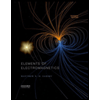 Elements Of ElectromagneticsMechanical EngineeringISBN:9780190698614Author:Sadiku, Matthew N. O.Publisher:Oxford University Press
Elements Of ElectromagneticsMechanical EngineeringISBN:9780190698614Author:Sadiku, Matthew N. O.Publisher:Oxford University Press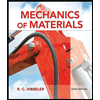 Mechanics of Materials (10th Edition)Mechanical EngineeringISBN:9780134319650Author:Russell C. HibbelerPublisher:PEARSON
Mechanics of Materials (10th Edition)Mechanical EngineeringISBN:9780134319650Author:Russell C. HibbelerPublisher:PEARSON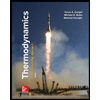 Thermodynamics: An Engineering ApproachMechanical EngineeringISBN:9781259822674Author:Yunus A. Cengel Dr., Michael A. BolesPublisher:McGraw-Hill Education
Thermodynamics: An Engineering ApproachMechanical EngineeringISBN:9781259822674Author:Yunus A. Cengel Dr., Michael A. BolesPublisher:McGraw-Hill Education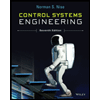 Control Systems EngineeringMechanical EngineeringISBN:9781118170519Author:Norman S. NisePublisher:WILEY
Control Systems EngineeringMechanical EngineeringISBN:9781118170519Author:Norman S. NisePublisher:WILEY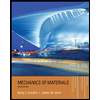 Mechanics of Materials (MindTap Course List)Mechanical EngineeringISBN:9781337093347Author:Barry J. Goodno, James M. GerePublisher:Cengage Learning
Mechanics of Materials (MindTap Course List)Mechanical EngineeringISBN:9781337093347Author:Barry J. Goodno, James M. GerePublisher:Cengage Learning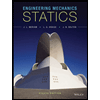 Engineering Mechanics: StaticsMechanical EngineeringISBN:9781118807330Author:James L. Meriam, L. G. Kraige, J. N. BoltonPublisher:WILEY
Engineering Mechanics: StaticsMechanical EngineeringISBN:9781118807330Author:James L. Meriam, L. G. Kraige, J. N. BoltonPublisher:WILEY





